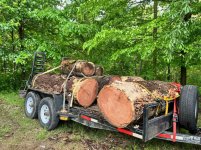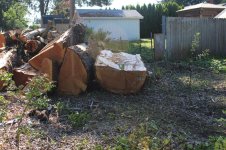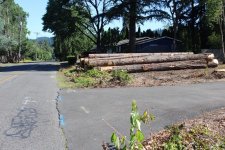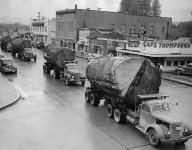Early this past April, a huge storm front swept across the Ohio valley, pushing high winds and tornadoes through several states. West Virginia, which normally only sees two tornadoes a year, saw five in one day. One worked its way across two counties, and ended up taking down massive trees near a good friend's father's house and garden. Luckily no damage to the house and no injuries. But the trees had to be removed. The friend contacted tree removal services, and all wanted to chip the trees to remove them. My friend, a journeyman furniture builder, was stubborn and held out hope he could find a woodworker with a sawmill. The reason, both trees were native cherry, and massive. The one in the yard had 40 feet of straight trunk before the first split to two large limbs. The bigger one was up the hill behind the house, and had nearly 60 feet of straight trunk. The woodworker he found looked at them, and they struck a deal. He would take both trees, cut them into lumber, and cure the wood. His fee? Half the finished lumber. My friend intends on building a solid cherry dining room set, table, chairs, sideboard, and hutch, and maybe a cherry headboard for the master bedroom, next year after it is fully cured.
Here's the first tree, bucked and loaded onto a trailer. The biggest log is 8 feet long and nearly 3 in diameter.
The weather can produce damage, but sometimes it produces rewards.
Here's the first tree, bucked and loaded onto a trailer. The biggest log is 8 feet long and nearly 3 in diameter.
The weather can produce damage, but sometimes it produces rewards.




